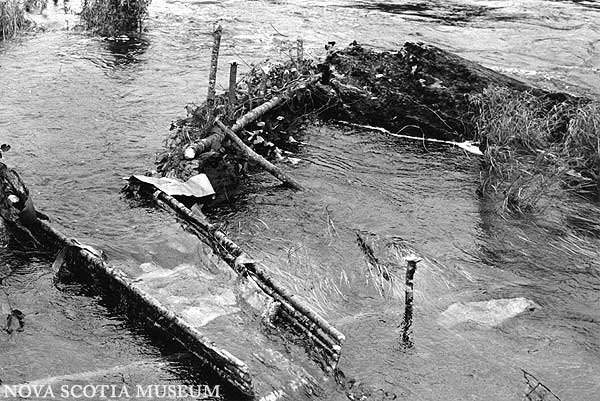
Mi'kmaq Test Review 6R Name: #:
Part A
1. Mi'kmaq means my kin-friends.
2. Their canoes were made from a wooden frame covered in birch bark.
3. They lashed their wigwam poses together with spruce roots.
4. The bottom of the wigwam was lined with fir boughs.
5. They made paint from red ochre and egg yokes.
6. Mi'kmaq greeted each other with shaking linked index fingers.
7. They enjoyed playing the game of waltes.
8. Mi'kmaq fished for eels in the fall.
9. The seams of the canoe were sealed with pitch.
10. To hunt in the winter they used snowshoes and toboggans.
11. For extra help in finding a moose the Mi'kmaq carried a magical pouch.
12. The women butchered the moose and took it back to camp.
13. The white moose butter was made from bone marrow.
14. The women set up the encampment.
15. The eels traveled at night.
Part B
1. The sweat lodge was of great importance to the Mi'kmaq men. It was made of
a low frame of saplings lashed with spruce roots and covered with birch bark. A
fire was made in the middle to heat stones, water was poured on the rocks to
create steam. It was used by the men who wore little or no clothing. They stayed
for hours and it was used in the winter.
It was designed for religious purposes, healing purposes, and cleansing of the
body (they would get hot and run out and roll in the snow).
2. The Mi'kmaq women heated water using a hollowed out log filled with water. Stones were heated in the fire and tongs made of wood were used to place the hot stones in the water to heat it.
3. The Mi'kmaq wedding began with bride service - the future groom would spend at least one year with the bride's family to prove he was a good provider and to see if the two were suited to each other. At the end of this time the groom's parents would arrive to arrange the wedding. The groom was responsible for providing the wedding feast. At the wedding they wore their best clothes - white moose hide, feathers, etc. Only the men, bride and the two mothers were allowed into the wigwam for the wedding ceremony. The other women and children stayed outside to cook and to play. The groom did the wedding dance, cut his hair and declared himself wed. The bride's mother cut the bride's hair and declared her wed. The bride was then placed on the groom's right side. The men danced around the fire, and the women played music and sang songs.
4. A. The Mi'kmaq men used spears, bows and arrows to hunt moose. The used snowshoes which gave them an advantage over the moose in the deep snow - they could walk quicker over the snow and the moose was slower wading through the snow. They used a magical pouch filled with moose hair and medicine, which they blew into the air, to find the best way to approach the moose - from down wind. They took food with them as the hunt could last for days. It was better to kill a cow moose than a bull because they would get the calf as well because it would stay with its mother. After the men killed the moose they would rough gut it and take the heart and liver. They would blaze, make marking on trees and bushes, to mark the trail for the women and even make a map for them on birch bark. The women butchered the moose and brought the meat to the campsite where they would smoke the meat or allow it to freeze to preserve it. The bones were placed in a tree out of respect.
| 4. B. The Mi'kmaq men killed a bear using a deadfall trap. This was a weighted log suspended suspended with small branches between two trees on each end. There was another log placed on the ground underneath. Bait was suspended from the upper log and the bear would be crushed, when it took the bait, between the two logs. To show respect to the bear's spirit the Mi'kmaq hunter would blow smoke in its nostrils. |  |
| 5. The Mi'kmaq men caught eels in the fall at night using an eel
weir. This was a fan shaped dam with a tapered channel made with
stones and sand lined with poles, brush and bark. This ended in a basket
catch-box. |
 |
 |
| 6. The Mi'kmaq women used a smoke pit to smoke and preserve the eels. This was dug into the side of a hill or river bank. logs were criss-crossed on top to make a rack for the eels. A fire was made in the bottom and green boughs were placed on top of the fire to make the smoke. |
 |